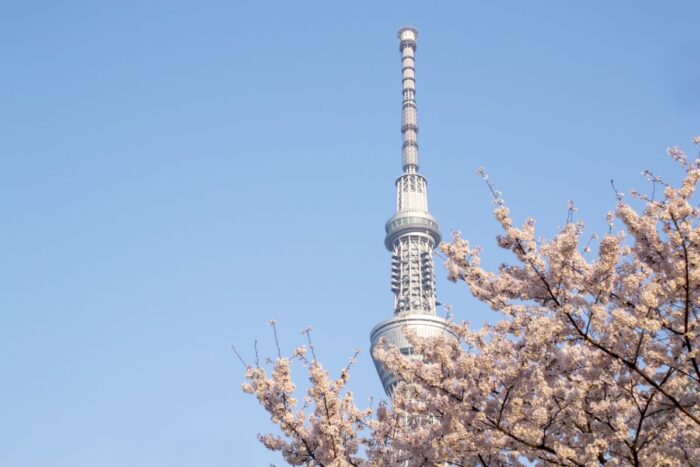Tokyo is a bustling metropolis that has a lot to offer. From its vibrant culture to its delicious cuisine, Tokyo is a city that never fails to impress. However, one aspect of Tokyo that is often overlooked is its geography. Tokyo is located on the eastern coast of Honshu, the largest island of Japan. It is situated on the Pacific Ring of Fire, which makes it prone to earthquakes and volcanic activity. Despite this, Tokyo is a city that has managed to thrive and become one of the most important economic and cultural centers in the world.

One of the most notable features of Tokyo’s geography is its size. Tokyo is the most populous city in Japan and one of the largest cities in the world. It covers an area of over 2,000 square kilometers and is home to more than 13 million people. The city is divided into 23 special wards, each with its own unique character and attractions.
Another interesting aspect of Tokyo’s geography is its location. The city is situated on Tokyo Bay, which opens into the Pacific Ocean. This location has made Tokyo an important port city and a hub for international trade. In addition, the city is surrounded by mountains, which provide a scenic backdrop and a natural barrier against typhoons and other extreme weather events. Overall, Tokyo’s geography has played a significant role in shaping the city’s history, culture, and economy.
Geographic Location

Tokyo, the capital city of Japan, is located on the eastern coast of Honshu Island. It is situated on the Pacific Ring of Fire, which is a region that is prone to earthquakes and volcanic eruptions. Tokyo is also located at the mouth of the Sumida River, which flows into Tokyo Bay.
The city is surrounded by mountains on three sides – the Okutama Mountains to the west, the Hakone Mountains to the southwest, and the Kanto Mountains to the north. These mountains provide a natural barrier against strong winds and typhoons that often hit the region.
Tokyo covers an area of approximately 2,190 square kilometers and is divided into 23 special wards. The city’s central business district is located in the Chiyoda ward, which is home to many of Japan’s largest banks and corporations.
Topography

Tokyo is located on the eastern coast of Honshu, the largest island of Japan. The city is situated on a bay called Tokyo Bay and is surrounded by mountains on three sides. The topography of Tokyo is characterized by a mix of flat land and hills with an elevation range of 0 to 2,080 feet (0 to 634 meters).
The western part of Tokyo is mainly flat land, while the eastern part is hilly. The Tama Hills, located in the western part of Tokyo, are a popular hiking destination for locals and tourists. Mount Takao, which is part of the Tama Hills, is a famous mountain with a height of 599 meters. The eastern part of Tokyo is dominated by the Musashino Plateau, which has an elevation of 30 to 50 meters.
The Sumida River, which flows through the heart of Tokyo, divides the city into two parts: the eastern part and the western part. The western part of Tokyo is further divided into two parts by the Tama River. The eastern part of Tokyo is mainly composed of reclaimed land and is more densely populated than the western part. The western part of Tokyo is less densely populated and has more green spaces.
The topography of Tokyo has been greatly altered by human intervention. In the past, Tokyo was a swampy area with many rivers and canals. Over the years, the rivers and canals were filled in and the land was reclaimed for development. Today, Tokyo is a modern city with skyscrapers and a well-developed transportation system.
Climate

Tokyo has a humid subtropical climate with hot and humid summers and cool winters. The city is located in a temperate zone, which means that it experiences four distinct seasons. The climate is influenced by the Kuroshio Current, which brings warm air and water from the south, and the Siberian High, which brings cold air from the north.
The summer months in Tokyo are hot and humid, with average temperatures ranging from 25°C to 30°C (77°F to 86°F). The humidity can make it feel much hotter, and the city experiences frequent thunderstorms and typhoons during this time. The winter months are cool and dry, with average temperatures ranging from 0°C to 10°C (32°F to 50°F). Snow is rare in Tokyo, but it does occasionally fall.
The best time to visit Tokyo is during the spring (March to May) and autumn (September to November) when the weather is mild and comfortable. The cherry blossoms in spring and the autumn foliage are also major attractions for tourists.
The Sum Up
Tokyo is a city that truly has it all. From its rich history and culture to its modern architecture and bustling streets, there is something for everyone in this vibrant metropolis.
While Tokyo may be known for its high cost of living, there are still plenty of ways to experience all that the city has to offer without breaking the bank. Whether it’s exploring the city’s many parks and gardens, trying out some of the local street food, or taking advantage of the city’s excellent public transportation system, there are plenty of ways to enjoy Tokyo on a budget.
Overall, Tokyo is a city that is constantly evolving and changing, and there is always something new to discover. Whether you’re a first-time visitor or a long-time resident, there is always more to explore and experience in this incredible city.


